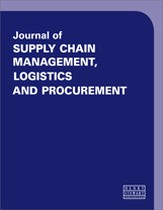Digital inventory powered by drones and robots
Abstract
Ask any manufacturer, distributor or retailer what its biggest supply chain challenges are right now and national labour shortage and changes in consumer behaviour and expectations will probably be on the top of the list. Following on labour’s heels will be issues such as e-commerce, high volumes of single-item orders and a lack of end-to-end supply chain visibility. Cumulatively, these issues are making life difficult for supply chain and logistics managers that at the same time are being asked to do more with less. Currently there is also a lot going on ‘under the covers’ of the typical logistics operation. Innovative technology, Industry 4.0, and overall digital transformation are all working to change the way supply chains are designed and utilised. While some leading-edge companies are investing in and benefitting from these innovations, many more are using antiquated methods and dated strategies (eg manual systems, spreadsheets and manual processes in the warehouse and yard), to run their supply chains. ‘As markets demand not only efficiency but agility and flexibility from supply chains, next-generation models are successfully combining automation and digital technologies to drive superior performance’, MHI reports ‘While this digital ecosystem is creating cost savings, innovation, and win-win opportunities along supply chains, it is also accelerating the pace of change, creating disruption and raising competitive pressures’.2 In this paper, we explore the use and applicability of autonomous vehicles and drones — computer-guided vehicles that can move without the need for human control, either on the ground, in a vehicle or in the air — to more effectively and efficiently manage digital inventory; show how one retailer is using drones to improve its digital inventory management; and explain how such technologies are being used to improve operational efficiencies, reallocate resources and improve employee safety in warehouses, yards, and stores.
The full article is available to subscribers to the journal.
Author's Biography
Matt Yearling is CEO of PINC, which provides scalable software, hardware and services that enable companies to identify, locate and orchestrate inventory through the supply chain predictably and cost-effectively. The company’s cloud-based real-time asset tracking platform, powered by an Internet of Things (IoT) sensor network that includes passive RFID, GPS, optical, cellular and other sensors, provides actionable insights and connected expert guidance that allow companies to optimise their supply chain execution.1 Even though 90 per cent of inventory is stationary in the supply chain, inventory accuracy at distribution centres, warehouses and plants ranges from 89 per cent to 99 per cent. In retail stores, this number drops to below 60 per cent. That is because most of the inventory management process is still a manual activity.
Citation
Yearling, Matt (2018, June 1). Digital inventory powered by drones and robots. In the Journal of Supply Chain Management, Logistics and Procurement, Volume 1, Issue 1. https://doi.org/10.69554/HFLC4802.Publications LLP
